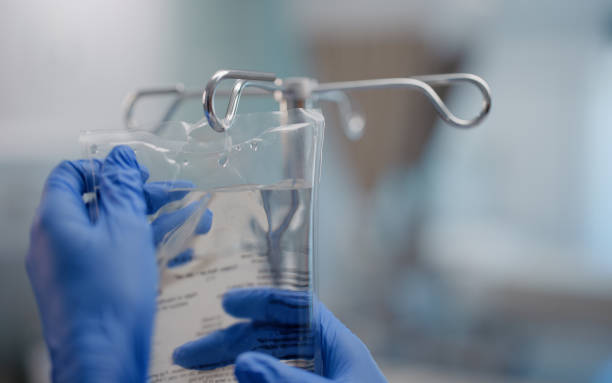Breakthrough Could Transform Drug Delivery and Revolutionize Treatment Options
Groundbreaking research may pave the way for converting intravenous (IV) drugs into oral medications, potentially expanding treatment options for difficult-to-treat cancers and other serious conditions. Scientists at The University of Texas Health Science Center at San Antonio (UT Health San Antonio) have developed a new approach that could dramatically change how drugs are designed, evaluated, and administered.
Currently, many complex or large-molecule drugs—such as those used for brain cancer or Alzheimer’s disease—cannot be taken orally because they are not easily absorbed into cells. As a result, these medications must be delivered via IV or infusion.
The research team introduced a novel strategy called chemical endocytic medicinal chemistry, which may overcome these limitations. This technique could allow oral delivery of drugs previously limited to IV use and may also influence how the FDA assesses future medications. Moreover, it opens the door to more personalized treatments, tailored to each patient’s unique biology, marking a major step toward truly precision medicine.
“This innovative chemical approach can potentially make any intravenous drug able to be taken orally,” said Robert A. Hromas, MD, FACP, dean of the Joe R. and Teresa Lozano Long School of Medicine at UT Health San Antonio. “It also can promote any drug crossing the blood-brain barrier. This will remarkably broaden the number of agents we have to treat brain cancer or dementia.”
The findings, published on April 17 in Cell under the title “C36-mediated endocytosis of proteolysis-targeting chimeras,” highlight a major advancement in drug delivery. The study was led by Dr. Hong-yu Li, professor of medicinal chemistry and chemical biology in the Department of Pharmacology at UT Health San Antonio, in collaboration with researchers from Duke University and the University of Arkansas for Medical Sciences.
The team’s innovative strategy takes advantage of CD36, a protein receptor found on the surface of many cells, to help large, water-soluble (or “polar”) drugs enter cells more effectively. By chemically enhancing how these drugs interact with CD36, the researchers were able to demonstrate that even large molecules—previously considered too big to be absorbed by cells—can now be delivered efficiently.
Dr. Li described this new approach, known as chemical endocytic medicinal chemistry, as a potential game-changer. The term “endocytic” refers to the cellular process of absorbing substances from the environment. “The implications for drug discovery and development are enormous,” he said, suggesting this approach could reshape everything from early-stage drug design to clinical application.
This breakthrough also reinforces San Antonio’s growing reputation as a hub for biomedical innovation, bolstered by institutions like UT Health San Antonio’s Barshop Institute for Longevity and Aging Studies, Mays Cancer Center, and the Center for Innovative Drug Discovery.
Traditionally, small-molecule drug design has been constrained by the assumption that cellular entry occurs mainly through passive diffusion—an unguided process. However, one of the most exciting recent developments in drug research is induced proximity, where molecules are designed to bring proteins together to trigger specific interactions or chemical reactions. This new strategy builds on that momentum, opening up new frontiers in therapeutic delivery and personalized medicine.
Until now, molecules larger than 500 Daltons—a unit of molecular weight—were generally considered unsuitable for drug development due to poor cell penetration and limited bioavailability. This constraint significantly narrowed the pool of compounds that could be used in induced proximity therapies.
However, a breakthrough by Dr. Li’s team at UT Health San Antonio has overcome this longstanding barrier. By chemically enhancing the CD36 receptor’s role in cellular uptake, the researchers were able to dramatically improve the entry of large and polar molecules into cells. While CD36 was previously recognized for its involvement in lipid transport and metabolism, the team discovered it could also facilitate the absorption of sizable chemical drugs—an unexpected and powerful finding.
This advancement could revive previously discarded drug candidates that failed due to poor absorption, offering new hope for turning them into viable treatments.
Provocative, Yet Strongly Supported Findings
In the study, the researchers identified and validated CD36’s ability to mediate end
“This was completely unexpected in the research field,” Li said. “For decades, it was thought that molecules this large couldn’t cross membranes effectively, since the endocytic cellular uptake of chemicals was unknown. Through chemistry and biology, we identified CD36 as a protein for uptake and optimized chemicals better engaging with CD36 to internalize these drugs to more efficiently reach target proteins.”
The very vital experimental outcomes were separately replicated by every team that took part in the research.
“As the research conclusion is so provocative, we verified the key results multiple times,” Li said. “The implications of this for drug discovery and development are enormous.”
implications for Drug Development
Traditional drug development is a lengthy and costly process that involves optimizing chemical compounds to passively diffuse into cells, balancing conflicting properties like permeability, solubility, and stability. In contrast, the development of endocytic drugs marks a paradigm shift by leveraging receptor-mediated cellular entry, bypassing these conventional challenges.
“This breakthrough discovery will force us to rethink how we approach efficacy and pharmacokinetics and toxicity,” Li said. “We believe it will also eventually change how regulatory agencies like the FDA evaluate and approve new endocytic drugs.”
Through examining tissue samples from prostate cancer patients, the team discovered significant variability in CD36 expression levels. According to Li, this could help explain why patients often respond differently to certain cancer treatments.
“By optimizing CD36 engagement through chemical endocytic medicinal chemistry, we may be able to target cancer and other diseases precisely through precision treatment based on the differential expression of CD36 in various tissues and different individuals,” he said.
What then follows?
Li noted that in addition to CD36, there are likely other cell surface receptors that could serve as targets for chemical endocytosis—an area his lab continues to investigate. He believes this discovery could significantly reshape the landscape of drug development over the next few decades, particularly in advancing induced proximity therapies. Li also pointed out that CD36 receptors are highly expressed in the intestine, brain, and skin, suggesting that chemical endocytosis could enable more effective drug delivery strategies, including improved oral bioavailability, the ability to cross the blood-brain barrier, and transdermal absorption.
“In the next 10 to 20 years, this may become a foundational approach in drug discovery and a new research field within medicinal chemistry,” Li stated. “We feel incredibly lucky to have made this discovery and opened the door to hope for previously untreatable diseases.”





